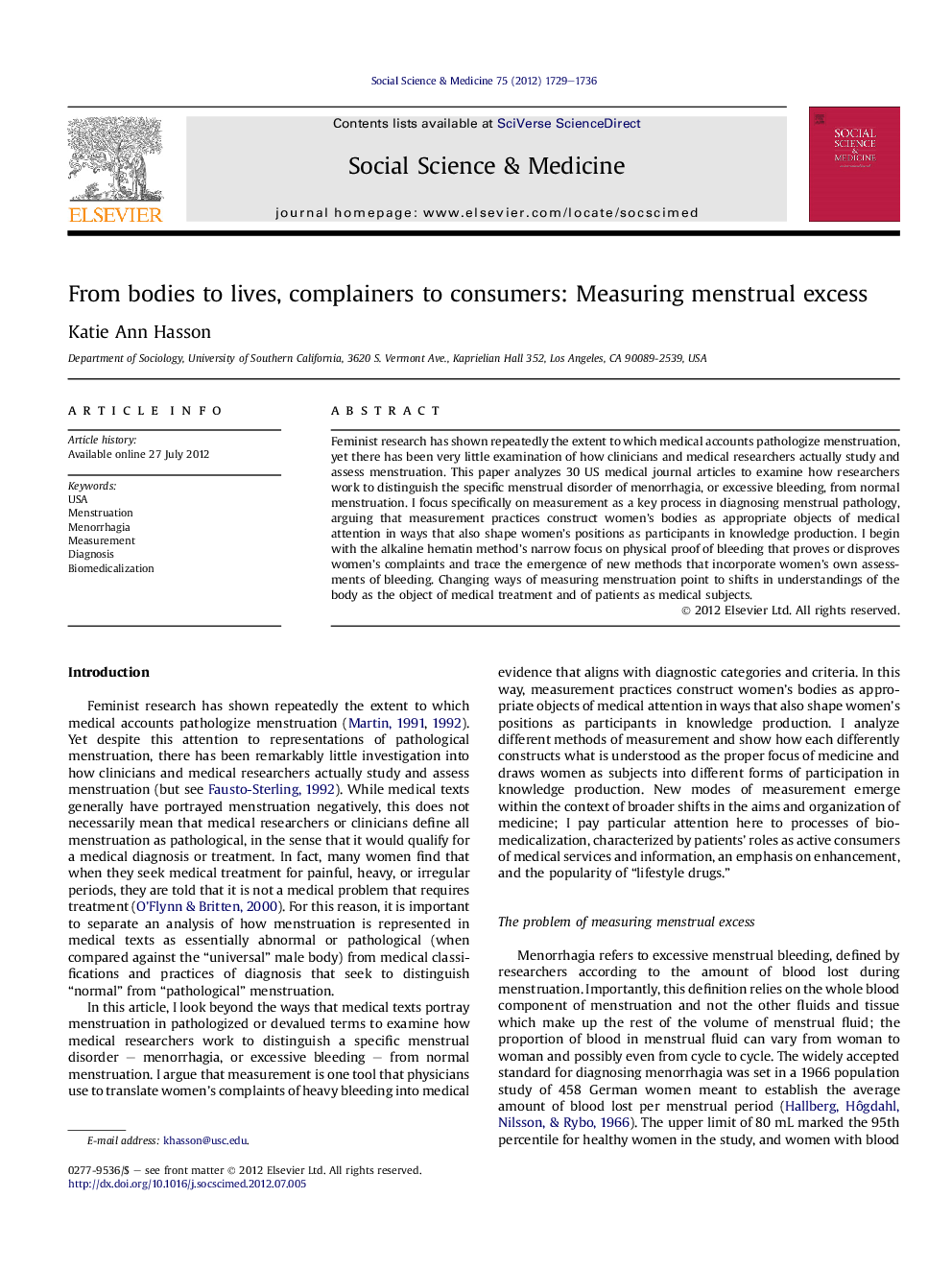| Article ID | Journal | Published Year | Pages | File Type |
|---|---|---|---|---|
| 952375 | Social Science & Medicine | 2012 | 8 Pages |
Feminist research has shown repeatedly the extent to which medical accounts pathologize menstruation, yet there has been very little examination of how clinicians and medical researchers actually study and assess menstruation. This paper analyzes 30 US medical journal articles to examine how researchers work to distinguish the specific menstrual disorder of menorrhagia, or excessive bleeding, from normal menstruation. I focus specifically on measurement as a key process in diagnosing menstrual pathology, arguing that measurement practices construct women's bodies as appropriate objects of medical attention in ways that also shape women's positions as participants in knowledge production. I begin with the alkaline hematin method's narrow focus on physical proof of bleeding that proves or disproves women's complaints and trace the emergence of new methods that incorporate women's own assessments of bleeding. Changing ways of measuring menstruation point to shifts in understandings of the body as the object of medical treatment and of patients as medical subjects.
► This study examines how medical researchers use measurement to distinguish menorrhagia from normal menstruation. ► Measurement actively constructs menstruation as medical object and shapes women's participation in knowledge production. ► Newer methods incorporate women's subjective experience, rather than objective measurements of blood volume. ► Changes in measurement reflect broader shifts in medicine toward optimizing bodies and treating patients as consumers.
